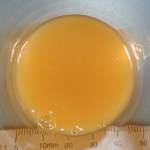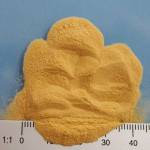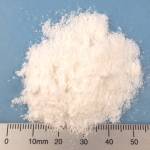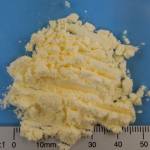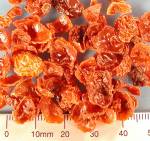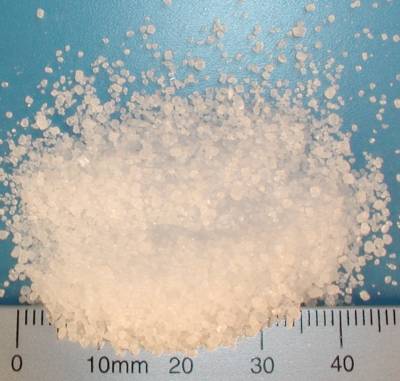
Citric acid crystalline, for organic recipes
Citric acid was first produced from the juice of the lemon - hence the name. Citric acid is one of the most widespread acids in the plant kingdom and occurs as a metabolic product in all organisms. In the past, citric acid was extracted from citrus fruits. Nowadays, citric acid is primarily produced biotechnologically with the help of microorganisms (mould Aspergillus niger). Raw materials such as maize and molasses serve as nutrient medium. No genetically modified raw materials are used for our product. Citric acid is also known under the European approval number E330 and serves as an acidifier, colour stabiliser (prevents browning of fruit) and flavour enhancer. The effectiveness/gelling power of pectin can be optimised if the pH value is optimally adjusted using citric acid. Possible areas of application are: Food, beverages and cosmetics. Our organic lemon juice concentrate 70.085 is often used as an alternative.
Benefits
- Rounding off the taste
- better colour retention of the fruit
- According to EU Bio VO 834/2007 (Infoxgen catalogue of operating materials), permitted in the production of organic food
Fields of Application
jam jelly salads fish dishes cold juices drinks specialities
Packaging
25 kg bags
Application
Citric acid suitable for organic formulations for processors
Where is citric acid naturally found?
Lemons have a natural citric acid content of 5-7%. It is also found in lower concentrations in apples, pears, sour cherries, raspberries, blackberries, currants, mushrooms, tobacco leaves and wine.
Alternatives, depending on the intended use, for citric acid can be, for example, ascorbic acid 70.102, organic acerola fruit powder 70.047 and organic lemon juice concentrate 70.085.
How is citric acid crystalline used?
Basic recipe for the production of organic jam:
1) 1000 g (= 1 kg) fresh fruit certified organic.
2) 500 g (= 0.5 kg) organic white sugar, Art. No. 90.001 or organic sugar golden yellow, Art. No. 90.018 depending on the desired sweetness you can vary the amount of sugar by +-25
3) 12 g pectin for organic recipes Art. No. 70.084 as well as possibly:
4) 6 g citric acid for organic recipes Art. No. 70.083
Preparation instructions: Bring the chopped fruit to the boil in sugar, let it bubble up a few times (boiling time approx. 1 minute). Then mix pectin (and possibly citric acid) with a little sugar and water and stir into the hot fruit mixture. Let it boil for about 5 minutes. Fill the hot jam into the jars, close them tightly and turn them upside down for about 10 minutes.
What is citric acid used for?
When processing fruit, citric acid is used to achieve better colour retention. Citric acid protects your products from a reaction with oxygen and ensures that colour, taste and vitamins are preserved. Citric acid can be used as a food additive (=technical adjuvant) for organic food. Common applications are: Jam, jelly, salads, fish dishes, cold juicing, drinks, ice cream, confectionery, pasta, cheese, vegetables and fruit products.
But it can also be used for cleaning in the household. For example, for descaling (washing machines and the like), as a rinse aid or as a softener.
How is citric acid produced?
Citric acid can be produced in several ways.
In the original process, lemon juice is treated with a concentrated ammonia solution. Pure citric acid can then be obtained through various precipitations, filtrations and other intermediate steps.
Large-scale processes now cover the very high global demand. In the Emser process and the submerged process, citric acid is produced using the microorganism Aspergillus niger. In a low-oxygen environment, the Aspergillus fungus processes molasses into citric acid. This is then purified and concentrated in a complex process.
Things to know about citric acid!
The citric acid cycle (=citrate cycle) is known from biology. This is a process that takes place in the "power plants of the cell" (=mitochondria) of all animal and plant cells and contributes to energy production. Citric acid, with the structural formula C6H8O7, plays a central role in this process!
In food, citric acid is the most commonly used edible acid. Our citric acid crystalline, for organic recipes has a very wide range of applications, even outside the food industry. Possible applications are: Food and beverages, as a household cleaning agent (descaler, pipe cleaner, mould remover), cosmetics (creams), paper, textiles and pharmaceuticals. Citric acid has a very low pH value and is not toxic in diluted form. Our citric acid powder is easily and quickly soluble in water. Speaking of water, citric acid and baking soda are main ingredients in bath balls. The sodium bicarbonate provides the popular fizz in the bathtub.



